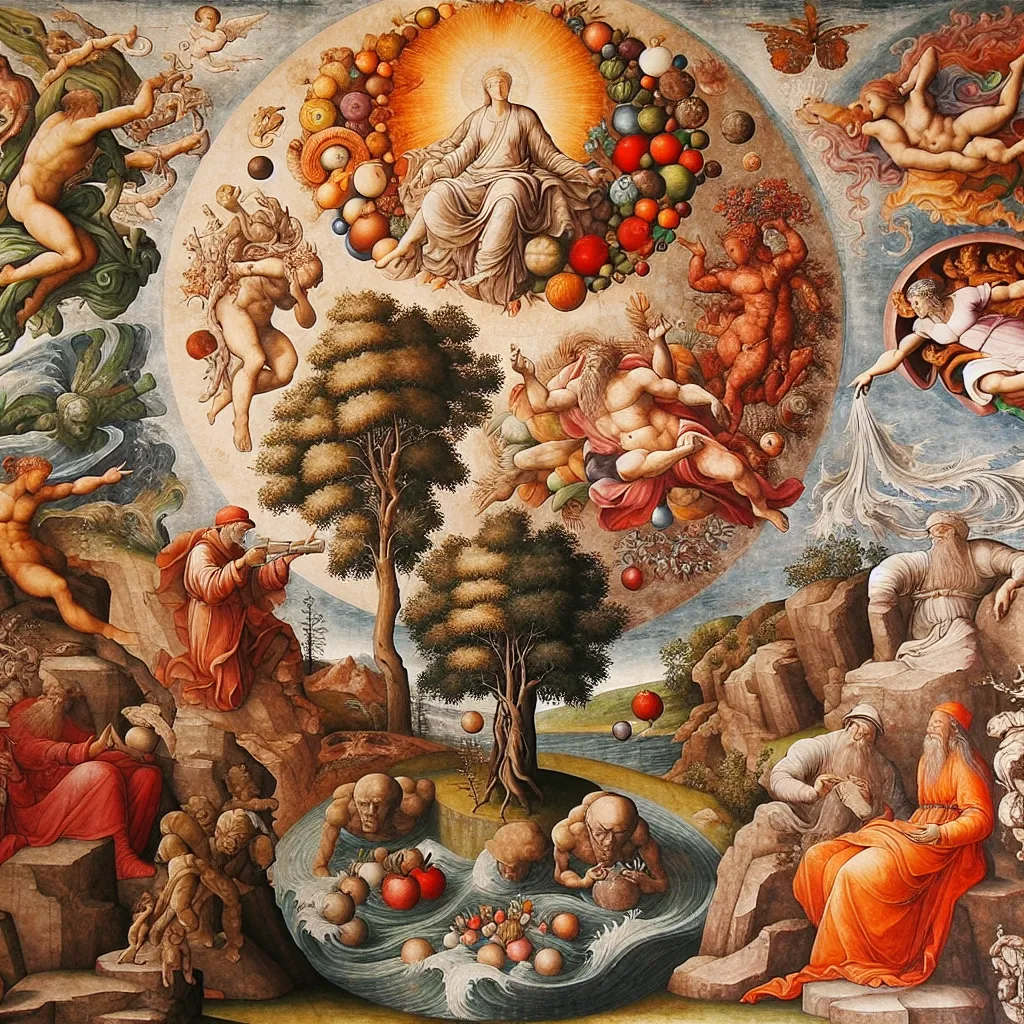
- Published on
- Authors

- Name
- You
The Five Elements in Taoism: Interactions and Balance
The concept of the Five Elements, or Wu Xing (五行), is a fundamental aspect of Taoist philosophy and practice. These elements—Wood, Fire, Earth, Metal, and Water—are perceived as dynamic forces that interact in various ways to maintain harmony and balance in the universe. The Five Elements theory delves deeply into the cycles of creation and destruction, providing profound insights into both the natural world and human experience.
The Five Elements Explained
1. Wood (木)
Wood symbolizes growth, vitality, and flexibility. It is associated with the Liver and Gallbladder in traditional Chinese medicine, representing regeneration and expansion. Wood's season is Spring, embodying new beginnings and growth.
2. Fire (火)
Fire represents transformation, passion, and energy. It relates to the Heart and Small Intestine, reflecting joy and warmth. The season of Fire is Summer, a time of maximum yang energy and activity.
3. Earth (土)
Earth is the element of stability, nourishment, and grounding. It connects to the Spleen and Stomach, indicating digestion and the nurturing of life. The transitional period between seasons, known as Late Summer or Dojo, falls under Earth's dominion.
4. Metal (金)
Metal symbolizes structure, resilience, and clarity. It is linked to the Lungs and Large Intestine, highlighting processes of purification and elimination. Metal's season is Autumn, a period of introspection and letting go.
5. Water (水)
Water represents fluidity, wisdom, and adaptability. It corresponds with the Kidneys and Bladder, emphasizing reproduction and intuition. The season of Water is Winter, denoting rest, reflection, and conservation.
The Cycles of Interaction
The Five Elements interact through two primary cycles: the Creative (Generating) Cycle and the Destructive (Controlling) Cycle. Understanding these interactions is crucial for achieving balance and harmony.
Creative Cycle (Sheng Cycle)
| Wood | → | Fire | → | Earth | → | Metal | → | Water | → | Wood | |------|----|------|----|-------|----|-------|----|------|
- Wood feeds Fire: Wood provides the fuel that Fire needs to burn.
- Fire creates Earth: Ashes from Fire enrich the soil, creating Earth.
- Earth bears Metal: Minerals and metals are extracted from the Earth.
- Metal enriches Water: Metals can condense water vapor, forming Water.
- Water nourishes Wood: Water supports the growth of plants and trees.
Destructive Cycle (Ke Cycle)
| Wood | ⊣ | Earth | ⊣ | Water | ⊣ | Fire | ⊣ | Metal | ⊣ | Wood | |------|----|-------|----|-------|----|------|----|------|
- Wood parts Earth: Plant roots can break through the soil, altering its structure.
- Earth absorbs Water: Soil can contain and control Water flows.
- Water extinguishes Fire: Water can quench Fire.
- Fire melts Metal: Intense heat can melt and shape metal objects.
- Metal cuts Wood: Metal tools are used to cut and shape Wood.
Achieving Balance and Harmony
In Taoism, the key to a harmonious life is balancing these elemental interactions within ourselves and our environment. This balance promotes physical health, emotional stability, and spiritual well-being.
Practical Applications
Traditional Chinese Medicine (TCM)
In TCM, practitioners use the theory of the Five Elements to diagnose and treat illnesses by restoring balance among the elements within the body. Herbal remedies, acupuncture, and dietary adjustments are commonly employed.
Feng Shui
Feng Shui, the ancient Chinese art of placement, also integrates the Five Elements to harmonize environments. By organizing spaces according to the principles of the Five Elements, one can influence the flow of energy (Qi) and enhance well-being.
Personal Development
Individual self-cultivation in Taoism involves recognizing and nurturing the elements within. Practices such as Tai Chi, Qigong, and meditation are designed to harmonize the body's energy, aligning it with the natural rhythms of the universe.
Conclusion
The Five Elements framework offers a profound way to understand and interact with the world, blending mystical wisdom with scientific insights. By exploring the dynamic relationships between Wood, Fire, Earth, Metal, and Water, one can achieve a balanced and harmonious existence, reflecting the intricate balance of the cosmos itself.
Embrace the teachings of the Five Elements, and let their harmonious dance inspire a journey towards greater balance and harmony in all aspects of life.
